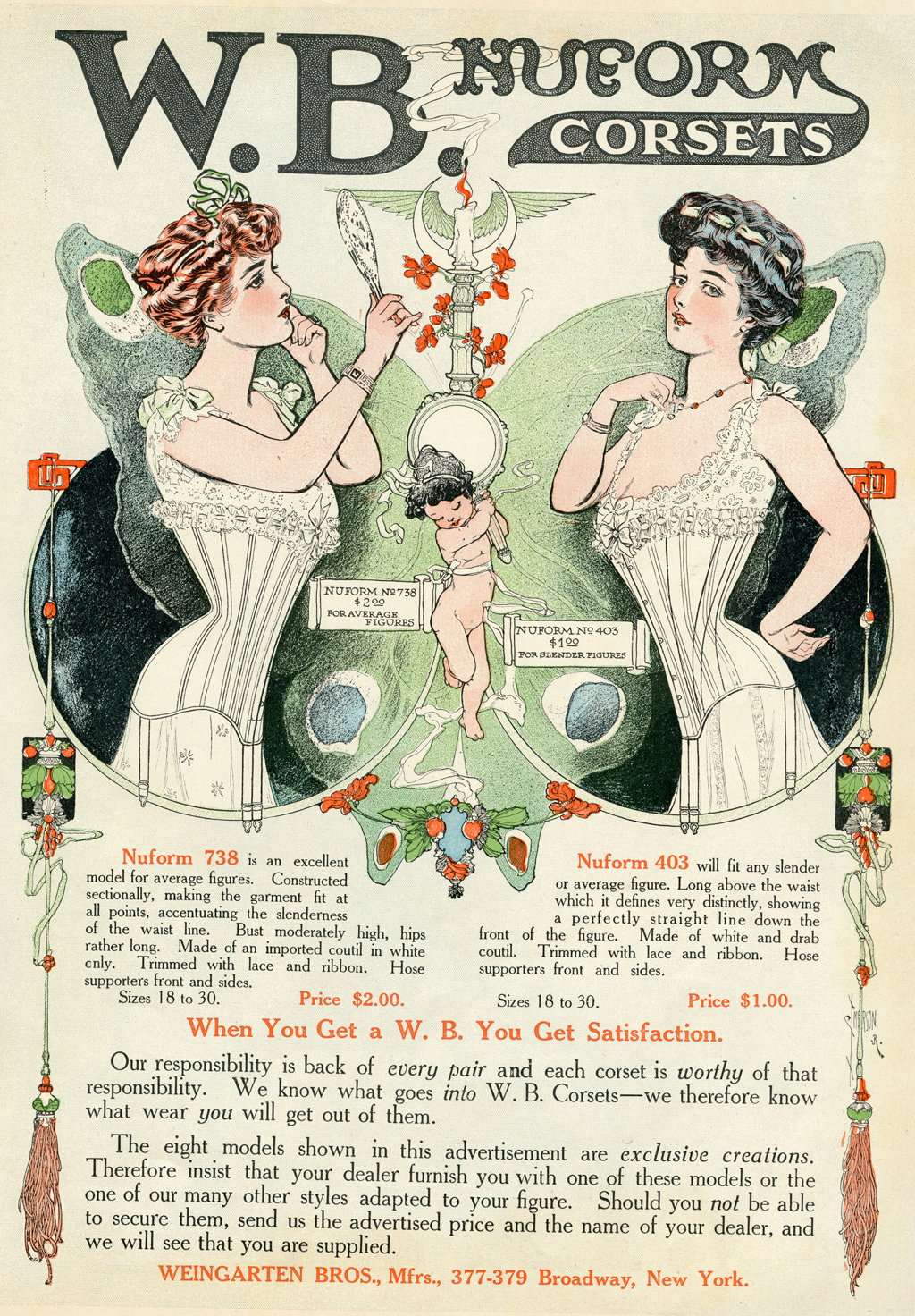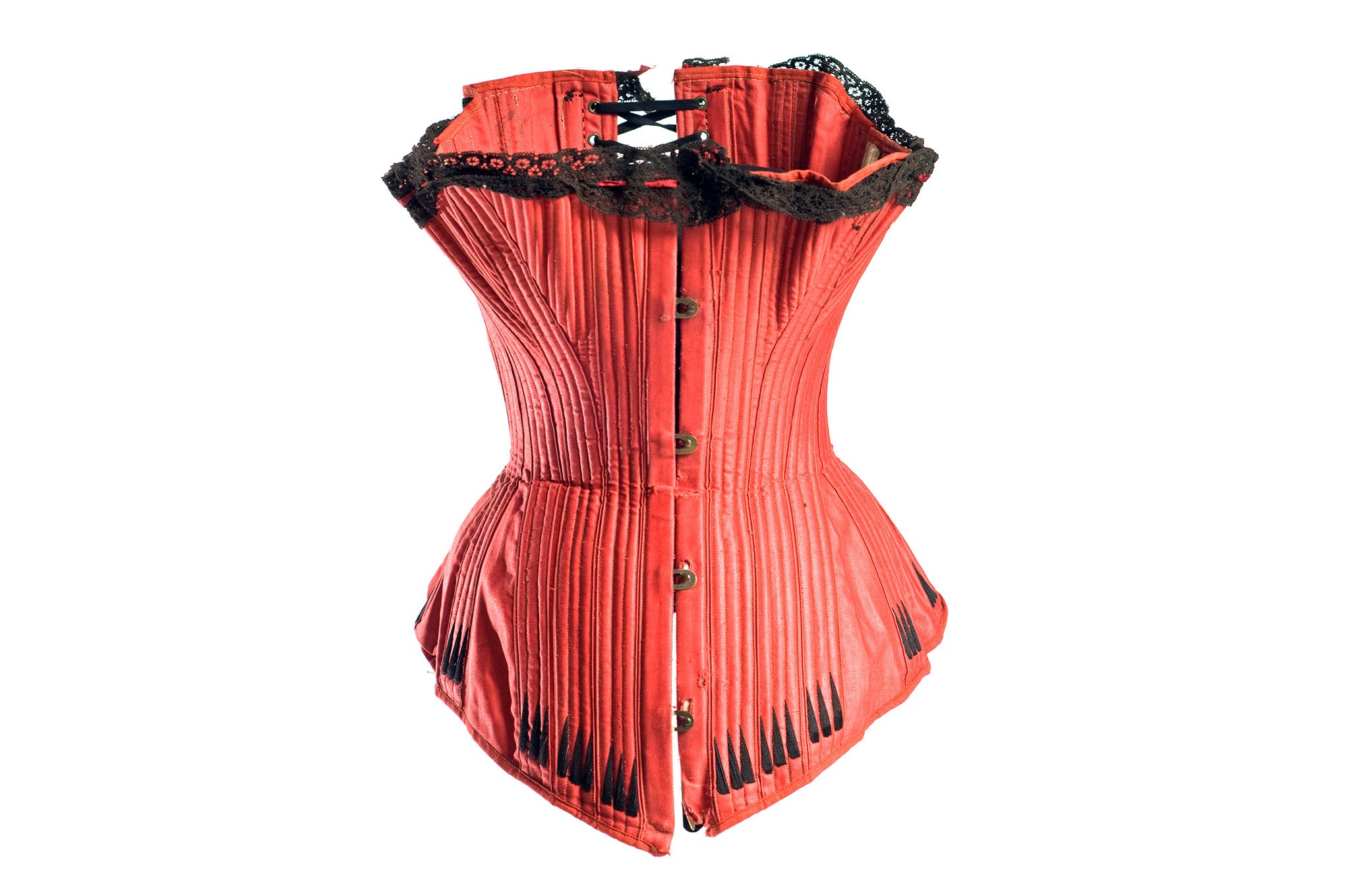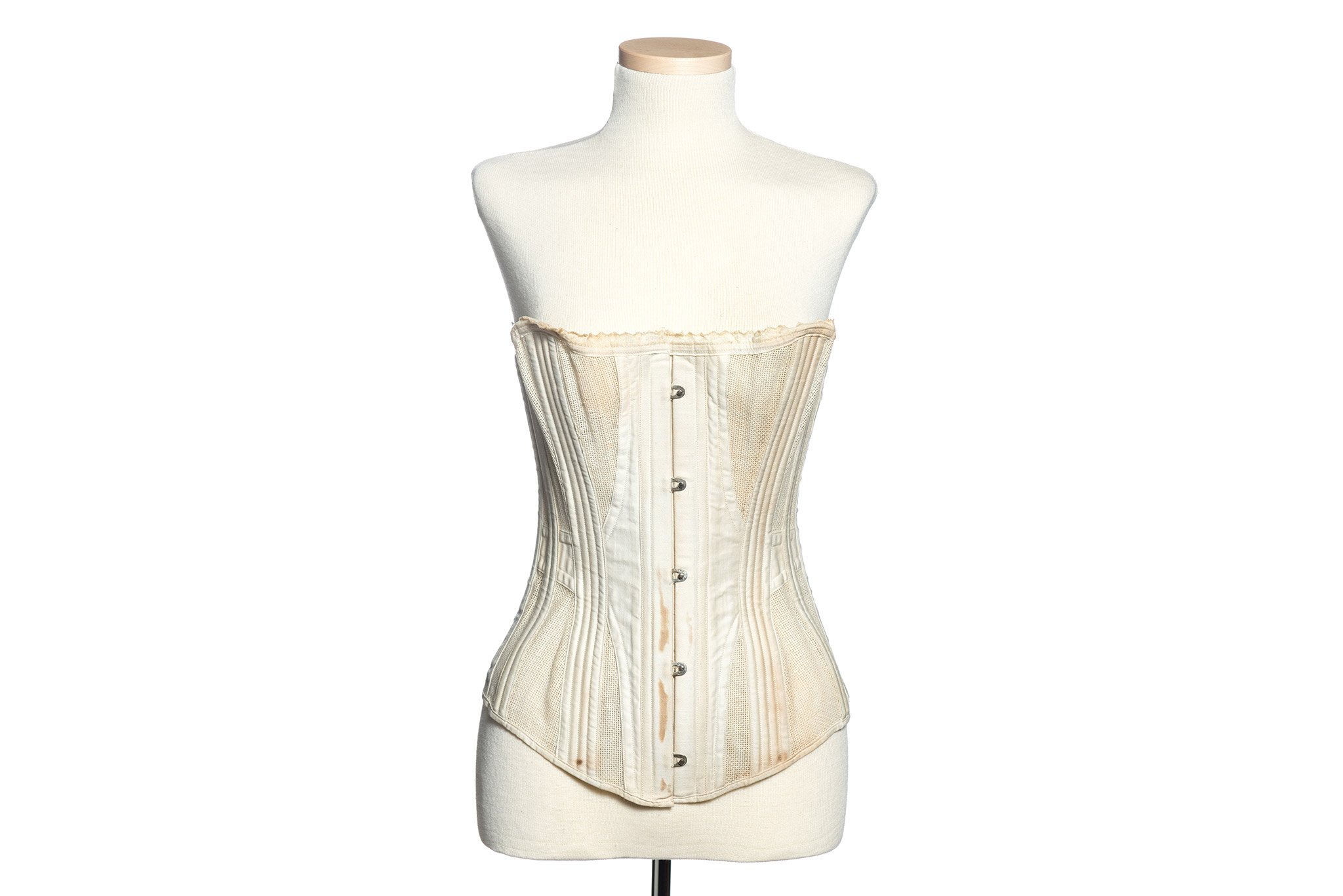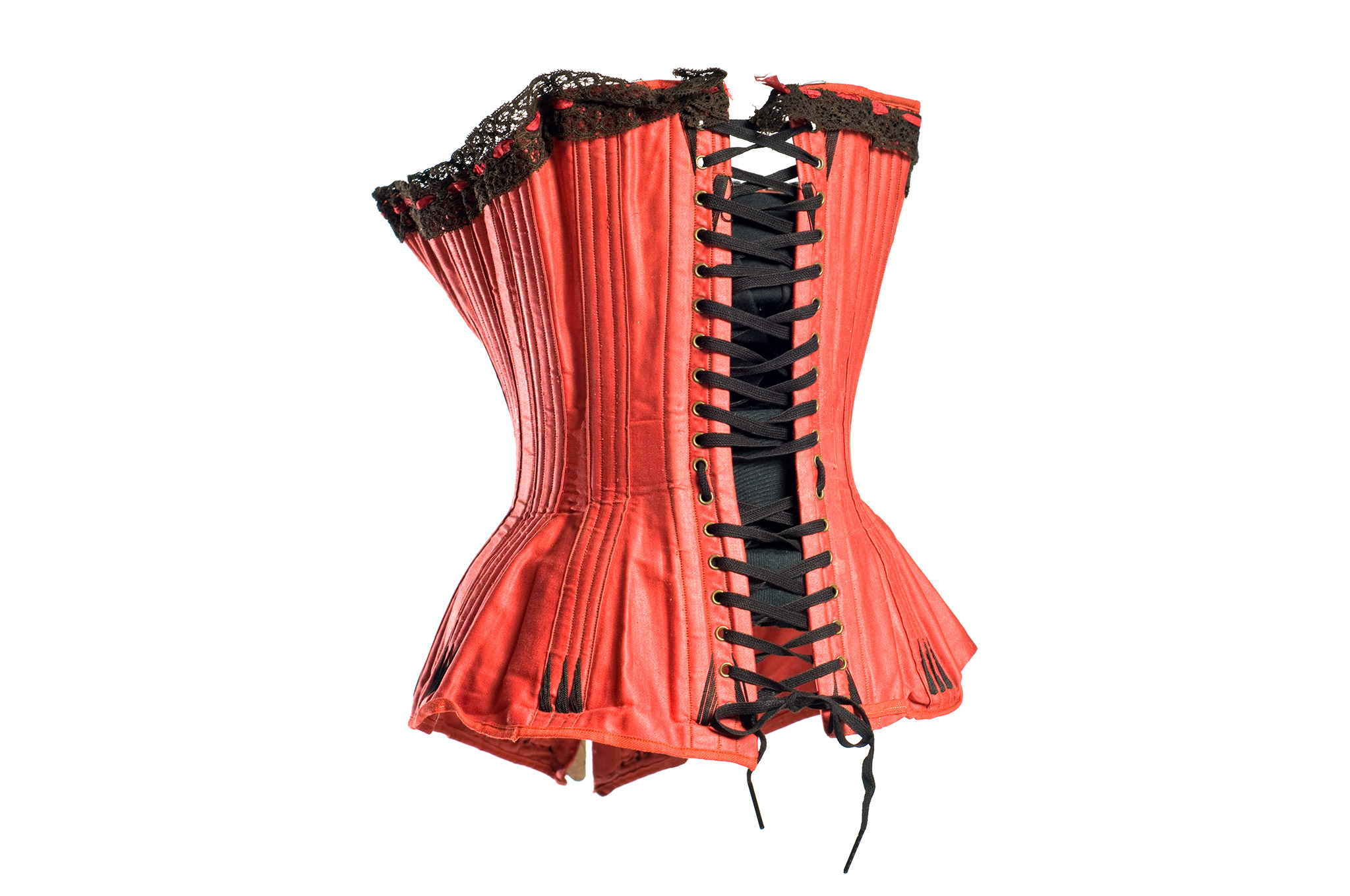Killer Fashion: The Consequences of Corsetry
PAST EXHIBIT
The Charleston Museum’s current Textiles exhibit, Killer Fashion: The Consequence of Style, looks at the often tragic side of fashionable dress as it relates to the natural environment and those who wore these garments. This exhibit will be on display until March 5, 2017. From now until then, we will post different aspects of the exhibit. Below, read our post, The Consequences of Corsetry and to read others, visit our the News section on our website.
 Corset advertisement from the magazine The Designer, October 1906.
Corset advertisement from the magazine The Designer, October 1906.
Made popular in Europe during the 16th century, the corset is an article of stiffened underclothing made to shape the human torso using a series of stays and lacings. Corset makers originally used whale baleen (read our blog post Killing for Baleen) and wood for the shaped stays, that when tightly laced, created a “fashionable silhouette” for the wearer. As the 19th century progressed, however, the baleen and wood stays were replaced by stronger and even more inflexible steel stays.
White cotton corset made by The Self Adjusting Corset Co., Rochester N.Y., with encased metal stays, slot and stud closure in the front and lacing center back, c. 1886.
While not usually deadly, wearing a tightly laced corset can be quite harmful to the wearer. They can reduce lung capacity, cause shortness of breath and fainting, produce skin irritations, compress the ribs, weaken back and chest muscles and have even been known to cause organ deformity. Tight corsetry can also exacerbate lung conditions such as pneumonia, dangerously restrict digestion, cause constipation and can also worsen any existing issues within a woman’s reproductive system. Remarkably enough, a “maternity corset” was designed in the 1830s, allowing pregnant women to stay in fashion. Despite the spatial allowance made by the corset maker, however, it still caused great harm to both mother and child.
 Front of red cotton corset made by Farcy and Oppenheim, Paris, with encased metal stays, lacing in the back with front slot and stud closure, c. 1880
Front of red cotton corset made by Farcy and Oppenheim, Paris, with encased metal stays, lacing in the back with front slot and stud closure, c. 1880
Today, corsets are made from plastic, steel, and elastic, and despite doctors continued warnings of bruised internal organs, skin irritations and breathing problems, the trend of wearing corsets and shape wear has come back into fashion.



